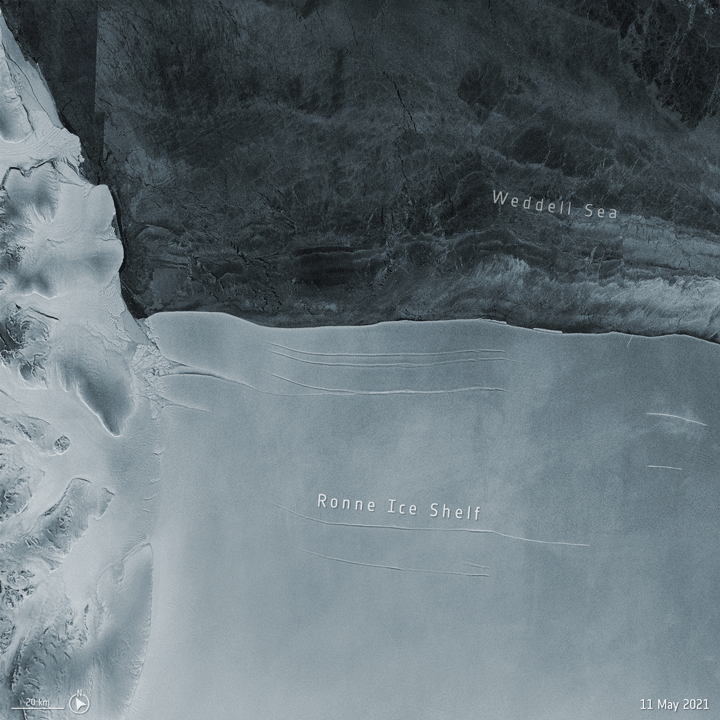
An enormous iceberg – named A-76 – is now the biggest iceberg on Earth. The berg broke off from the western side of Antarctica’s Ronne Ice Shelf into the Weddell Sea. The huge iceberg measures about 1,668 square miles (4,320 square km) in size. That’s slightly bigger than the Spanish island of Majorca (see the comparison in the above image) and about 80 times the size of Manhattan.
The iceberg was spotted by the British Antarctic Survey on May 13, 2021, and confirmed on May 13 by the U.S. National Ice Center, ESA reported.
A-76 snatched first place as the world’s biggest iceberg from iceberg A-23A, also located in the Weddell Sea. A-23A is around 1,498 square miles (3,880 square km) in size. A-76 is also much larger than another berg that broke off Antarctica in February. That iceberg – A-74 – measured about 490 square miles (1,270 square km).
New giant #iceberg breaking away from the Ronne Ice Shelf 13-05-2021 roughly 160 km x 25 km satellite image from @polarview @CopernicusEU #Sentinel1 pic.twitter.com/LmacupcuUW
— Keith Makinson (@KeithMakinson1) May 13, 2021
Researchers said that the calving of A-76 from the Ronne Ice Shelf was part of the shelf’s normal life span, and might not be directly related to climate change.
The iceberg won’t contribute to to sea level rise as it melts. That’s because it’s floating ice, so it has already displaced the same volume of water it will add to the ocean as it melts.
Watch the world’s biggest iceberg break free
This animation uses images from ESA’s Copernicus Sentinel-1 satellite mission. It shows the giant slab of ice breaking off from the Ronne Ice Shelf on May 13, 2021.
The Ronne Ice Shelf is one of the biggest of several gigantic floating sheets of ice that connect to Antarctica’s landmass and extend out into the surrounding seas.

What will happen to iceberg A-76?
Scientists aren’t sure what will happen to iceberg A-76. Big icebergs like A-76 can drift through the South Atlantic for several years before breaking into smaller pieces and melting away.
Take the case of iceberg A-68A. The iceberg first broke from Antarctica’s Larsen C ice shelf in July 2017. By last fall (November 2020), the colossal Antarctic berg – then the world’s largest – was on a collision course with South Georgia Island, a remote island in the southern Atlantic Ocean. But by the end of 2020, a large piece of the iceberg had broken off, and more large cracks were spotted in the berg at the end of January 2021. The newest satellite images reveal that the once colossal iceberg has now broken into multiple pieces.
Bottom line: The world’s biggest iceberg – named A-76 – cracked off Antarctica in late May, 2021.











